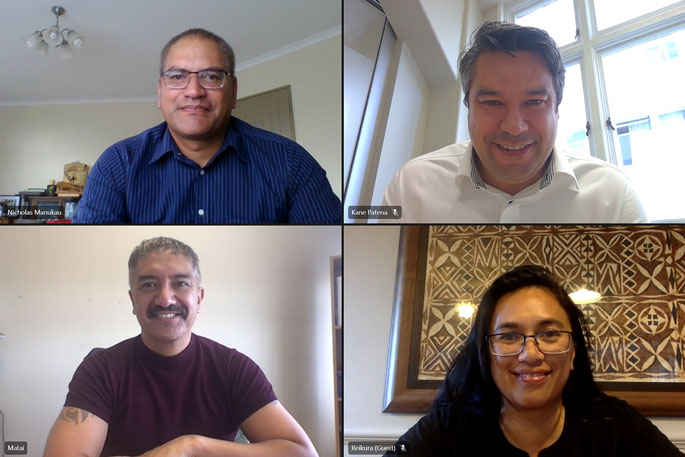Te Mātāwai and Waka Kotahi NZ Transport Agency have agreed to make joint decisions on the next set of bilingual traffic signs that are expected to progress to public consultation later in 2022.
The He Tohu Huarahi Māori Partnership Rōpū will be supported by a multi-disciplinary team from both organisations and an expert panel of te reo Māori translators from across the motu.
Te Mātāwai is an authority derived from Iwi and Māori and is the Crown partner for Māori language revitalisation.
Te Mātāwai Board Co-Chair Reikura Kahi says she and fellow partnership rōpū member Mātai Smith are clear that their focus will be on ensuring iwi Māori views are heard and acted on so that iwi and Māori identity is enhanced at the local level.
'Our vision is Kia ūkaipō anō te reo, to restore te reo Māori as the nurturing first language in the home.
'We have seen the commitment to our language increase in the media, on television, in supermarkets and contemporary music, so seeing more te reo Māori at a community level where whānau live and play is a logical and critical next step.”
Supported by Te Manatū Waka Ministry of Transport and Te Taura Whiri I te Reo Māori Māori Language Commission, the final groups of signs will be shared for feedback with a wider iwi/Māori audience and Local Government, who will be responsible for implementing the signs on local roads. Public consultation will also be required as the signs involve making official Rule changes.
Director of Land Transport Kane Patena says the Waka Kotahi vision of contributing to having te reo Māori seen heard and spoken is aligned with Te Mātāwai.
'We are excited about the energy, expertise and commitment to te reo Māori that Te Mātāwai brings to the tēpu. And we expect to make decisions as a Partnership Rōpū that will uphold our values of kotahitanga and manaakitanga.
'Bilingual signs have been used on the roads for some time but progressing these groups of signs at once will help with more consistent, cost-effective and safe use across Aotearoa New Zealand.”
It's currently expected the bilingual signs will be implemented as new projects are progressed or as older or damaged signs need to be replaced.
A Kura School signs suite was released for public consultation late last year.. An announcement will be made in due course and will include the final specifications for the signs.
Waka Kotahi NZ Transport Agency has undertaken research to identify international precedents and to examine the safety implications of bilingual signage. Numerous countries use bilingual signs and no evidence was found of bilingual signage increasing the number of people being killed or seriously injured where this has been measured (for example in Scotland).



8 comments
Are you serious?
Posted on 25-03-2022 19:27 | By tia
When is this going to stop? Why are the NZTA not going to add Chinese, Fijian, Samoan and Japanese to road signs too??
signs
Posted on 25-03-2022 20:30 | By dumbkof2
thats great . put more words on the signs take longer to read cause more accidents
Hmmm
Posted on 25-03-2022 21:42 | By Let's get real
Let's hope that the current place-name (Whether Maori or European) has the largest font size. The reason... road signs need to be quickly recognizable to allow movement into the correct position on the road to reduce accidents... "The road to zero" is also a government initiative, but will it be usurped...?
No Thanks
Posted on 26-03-2022 08:16 | By Thats Nice
It is great if you want to "nurture the first language in your home" but traffic signs and what ever will be next is not in your home. We have seen a massive increase in the use of Te Reo everywhere which is fine but I personally don't want to replace the main language that is used by the majority of New Zealanders and that looks like where things are heading. No Thanks.
Right now..........
Posted on 26-03-2022 10:09 | By groutby
.........100% of us can understand all of the signs right?....with bi-lingual signs, 100% of us will still understand the signs....so, the gains to be had after the crazy expense and administration costs to change is...what exactly?
My first thought...
Posted on 26-03-2022 11:58 | By morepork
...on reading this was exactly the same as tia's. The reason signs are in English is NOT because of an affront to Te Reo (or any other ethnic language; it is because, in a diverse society, it is necessary to have a common language (or, lingua franca) that all members of the community can communicate in. This has been the case for thousands of years all over the World. Every society that has different ethnicities has an "official language" which is usually the lingua franca. Today, English is the de facto lingua franca for many countries, even though the official language of diplomacy is French. Some countries have multiple "official languages" and signage may be in 2 of these languages. Most countries accept signage in the lingua franca as being most practical; it keeps important information shorter, and reaches people - it has nothing to do with superiorit
Please
Posted on 26-03-2022 22:09 | By Walbuck
NZ Government Can we also have them in Braille As it will be just as useful
Traffic signs
Posted on 27-03-2022 12:58 | By peanuts9
I suggest Waka Kotahi NZ Transport Agency save their money in Tauranga. Nobody reads the road signs, see red lights or pedestrian crossings. Although I think Walbuck's idea of braille could be very helpful to many drivers.
Leave a Comment
You must be logged in to make a comment.